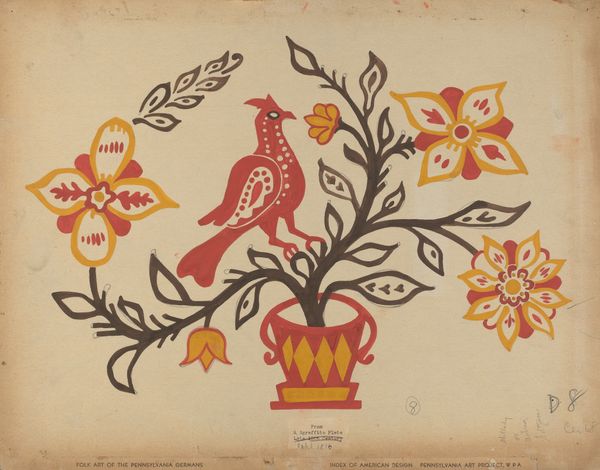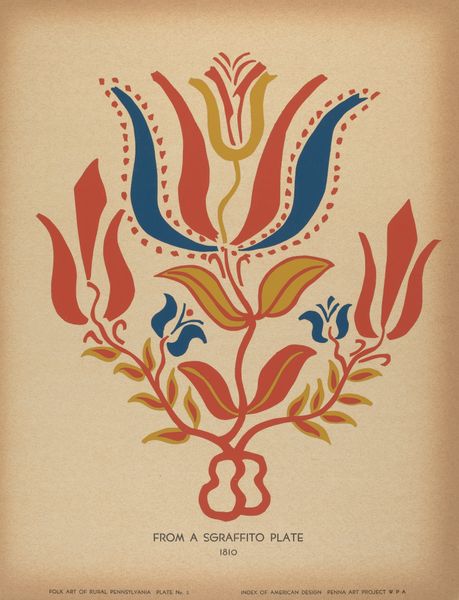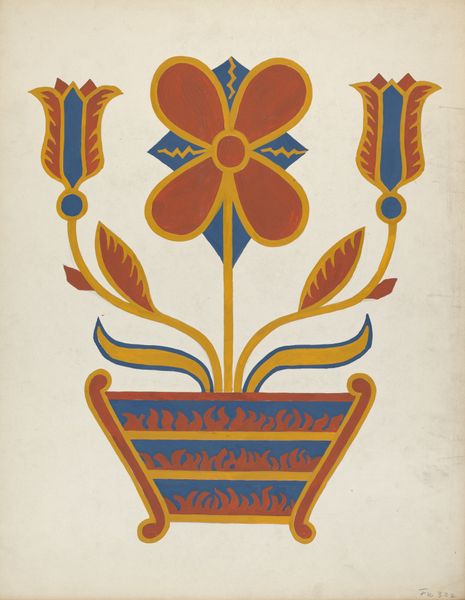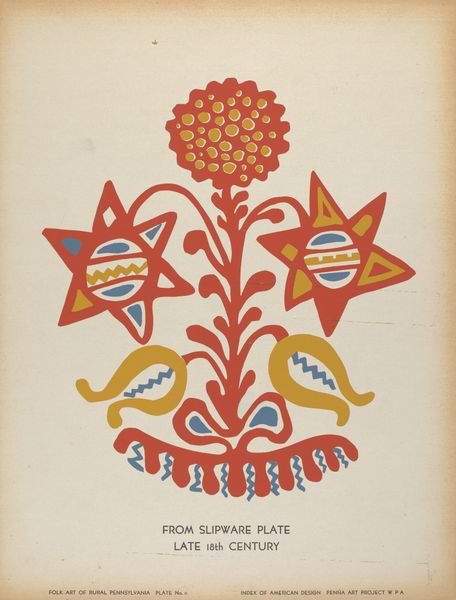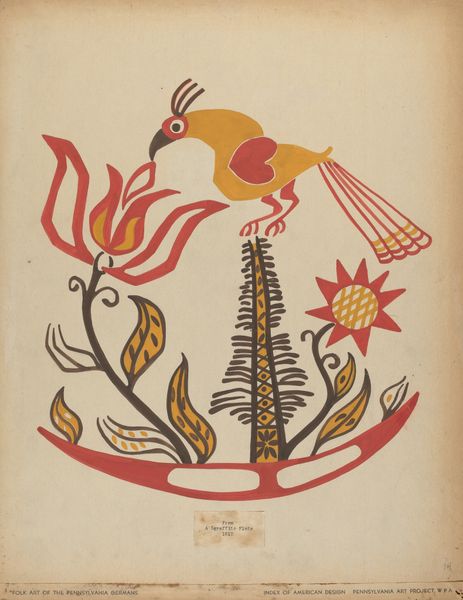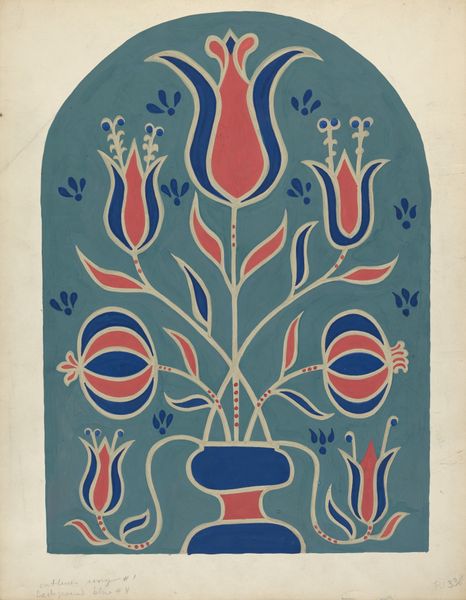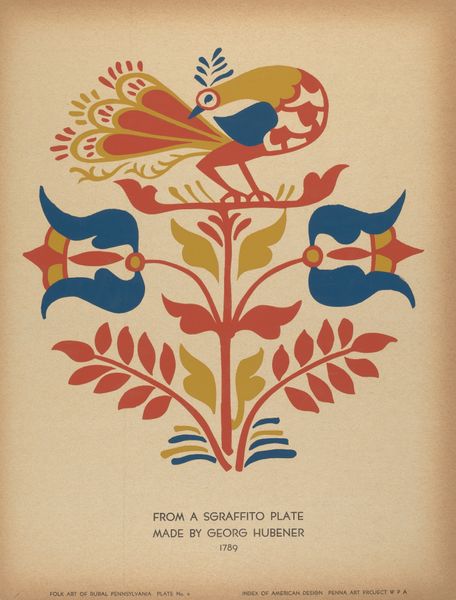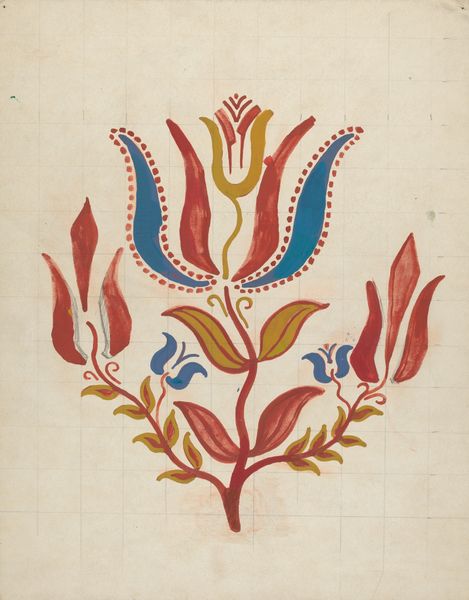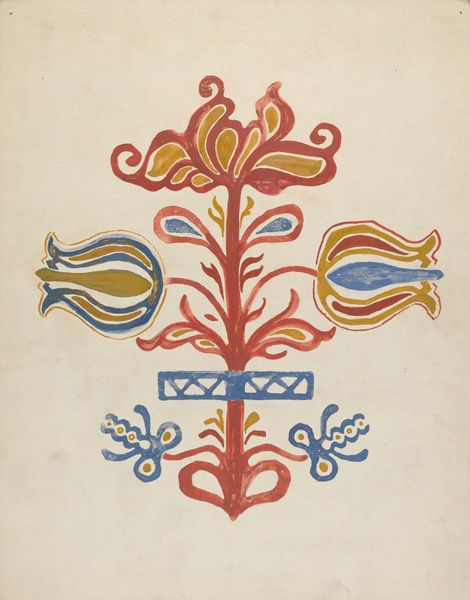
Drawing for Plate 4: From Portfolio "Folk Art of Rural Pennsylvania" c. 1939
0:00
0:00
drawing, paper, watercolor
#
drawing
#
water colours
#
figuration
#
paper
#
watercolor
#
folk-art
#
decorative-art
#
watercolor
Dimensions: overall: 45.9 x 35.4 cm (18 1/16 x 13 15/16 in.)
Copyright: National Gallery of Art: CC0 1.0
Editor: This is “Drawing for Plate 4: From Portfolio ‘Folk Art of Rural Pennsylvania,’” circa 1939. It's an anonymous watercolor and drawing on paper. I'm really struck by the boldness of the colors and the very defined shapes. What can you tell me about this piece? Curator: It's interesting to consider this work as a 'drawing for' a plate. The artist isn't simply creating a standalone image, but planning a design intended for reproduction in a functional object. The 'folk art' designation is also loaded, suggesting a connection to traditional skills and labor practices distinct from academic artistic production. Do you think the anonymity affects how we value it? Editor: I think it might. If we knew the artist, maybe we'd see it as individual expression, not just an example of a tradition. So, you are suggesting that it should be considered for both it's individual characteristics and as a specimen that may allude to folk art. Curator: Precisely! Think about the materials used – watercolor and paper – common, readily available materials associated with both artistic creation *and* everyday craft. This choice itself challenges that strict divide. Consider how the design might have been transferred onto a plate and how that would further change it. What do you make of the simplified, almost blocky, forms? Editor: I guess I hadn't thought about the *how* of it, more of the 'who.' It definitely gives it a more accessible and, I don't know, less precious feel, knowing it would become part of something functional through labor. The bold forms must make it easier to replicate the painting on a different support or using a completely different medium. Curator: Exactly. And, it highlights the labor inherent in both the creation of the design and its eventual application. Perhaps the "Folk Art" isn't just in the style, but in the very process of making. Editor: That shifts my perspective a lot. Thanks, I see how the materials and intention challenge the boundary between fine art and functional design. Curator: It's about interrogating that very boundary and appreciating the skills and means involved in production.
Comments
No comments
Be the first to comment and join the conversation on the ultimate creative platform.





